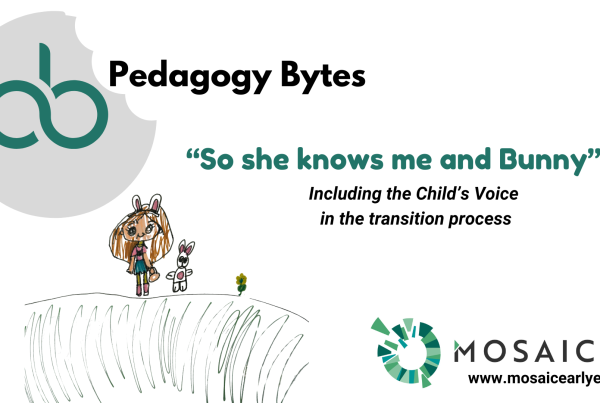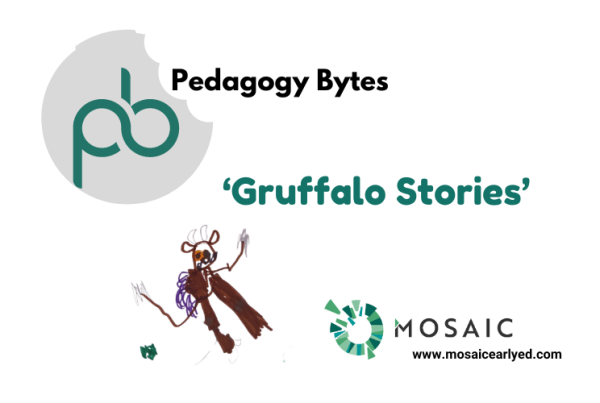It can be all too easy to fall into the practice of planning predictable curriculum themes year after year. However, despite the learning opportunities that seasonal and celebration themes can present, they may not interest all children and can inhibit children from following their own natural learning interests. Repeated themes can also become monotonous for Educators where it may be difficult to feel enthused and excited by a particular topic, if repeated on a continuous basis.
So how do I change this practice?
Emergent curriculum is a way of planning curriculum that focuses on being responsive to children’s interests to create meaningful learning experiences. It can be practiced with any age from babies to pre-school children. Emergent curriculum is based on the idea that children learn best when curriculum experiences represent their interests, strengths, needs, and lived experiences. To mirror this with adult life, we are more likely to learn and retain information when we are interested, motivated or passionate about something.
Common Misconceptions
One of the most common misconceptions about emergent curriculum is that it has to be completely child initiated. This is not the case. Emergent curriculum uses both child and Educator interests as a starting point for planning learning experiences. At times, topics emerge from children’s interests. Maybe they recently visited a travelling circus and saw elephants, or went to the dentist, or discovered a book about penguins, and now their interest is sparked by one of those topics. An interest has emerged and they’re excited about it, interested in finding out more, motivated to learn.
At other times, Educators will introduce specific topics or prompts to support children’s learning and development linked to Aistear’s themes. This two-way negotiation between what is of interest to the child and what the Educator knows is necessary for children’s education and development, is a powerful dynamic for holistic learning.
What does Emergent Curriculum look like in everyday practice?
You will notice a difference in a learning environment that allows a curriculum to emerge. Children will be enthusiastic about their learning, there will be a buzz of activity and ideas and adults will be motivated to follow the child’s lead. Creative displays and children’s work may not be perfect in the representational sense but they will be perfect in the individual sense.
Emergent Curriculum is largely project based, in that the children and Educators work together to brainstorm different topics within a larger topic and carry out experiments and collect materials based on these topics of interest.
Educators committed to this teaching philosophy use observations of children throughout their day as a tool for co-constructing curriculum content. Meaningful learning opportunities are then provided in support of Aistear’s learning themes and goals relevant to a specific age group.
Once the child has grasped a particular skill or concept, educators respond by enriching the learning experience by planning and offering increasingly challenging tasks. This represents the ‘moving forward/what next’ aspect of curriculum planning. As children repeatedly confront and master these self-led challenges, they come to view themselves as competent learners.
The Role of the Educator
Educators play an important role in their commitment to the implementation of emergent curriculum. Skilled observers use their knowledge of child development theory and follow the child’s lead by providing materials for children to actively explore as a means of inspiring a deeper understanding of a particular topic of interest.
Since learning requires repeated practice by the child, these interests are sustained through the continued planning, implementation and observation of experiences that challenge each child in a manner that is mindful of individual ability. Once a skill/learning has been achieved, learning interests are enriched through the addition of new materials that prompt or support new ideas. At this stage, the skilful Educator scaffolds and connects the child’s interests and play experiences to bring him/her to a new level of understanding/ability.
In addition to providing ongoing opportunities for play-based exploration across the curriculum, emergent curriculum also requires Educators to document and capture learning as it unfolds. Documenting learning experiences helps Educators understand where they have been and inspires ideas for where the curriculum might go next. It also helps children remember and understand the process of their own learning and gives parents concrete representations of their children’s developmental growth.
How can you plan for emergent curriculum?
Programme plans inspired by emergent curriculum take many forms. You could use a curriculum web plan as a visual account of the learning experiences that are offered across all areas stemming from the combined children and Educator interests. Group/collective interests are indicated at the centre of the curriculum web. Experiences in each of the curriculum areas are then recorded as a reflection of these interests. Typically, curriculum categories vary according to the age group educators are planning for or reflect individual learning goals or priorities.
The benefit of the curriculum web is that it allows flexibility in programme delivery in consideration of children’s changing needs and interests. It also encourages creative and open-ended shared thinking, which serves as a stark contrast to the restricted, linear approach that is typical of more traditional theme based planning.
For more information on Developing and Emergent Curriculum – see the link below:
http://aistearsiolta.ie/en/Curriculum-Foundations/Developing-an-emergent-and-inquiry-based-curriculum.pdf




